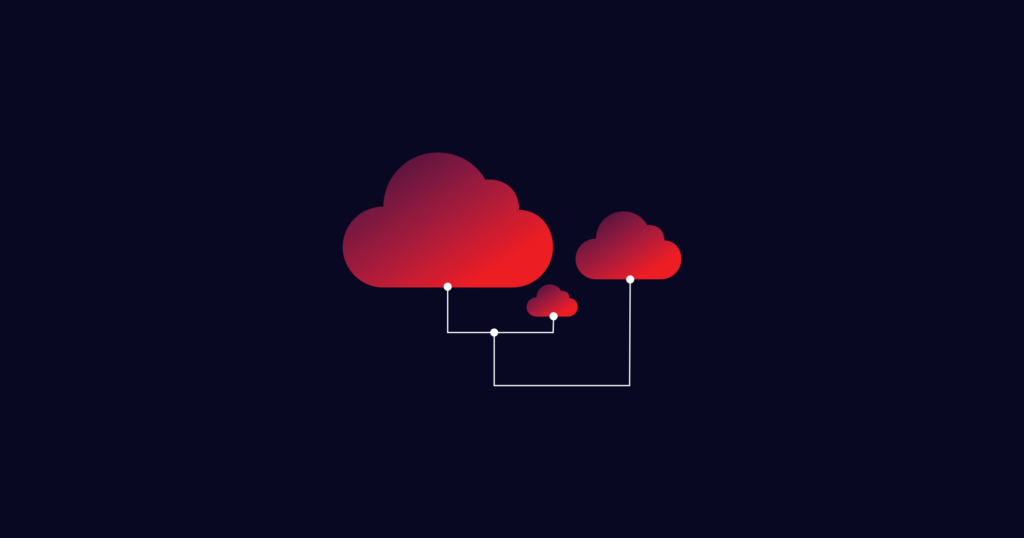
3 Key Networking Questions to Answer for Your Cloud Customers
- Cloud networking
- June 18, 2021
- RSS Feed
By Henry Wagner, Chief Marketing Officer
In managed services, systems integration, and cloud-native technologies, you’re entrusted by your customers to provide cloud-based expertise. But are you ready to address the key networking questions that drive success in the cloud?
With the rise of hybrid cloud and multicloud adoption and the increasing prevalence of edge data centres in rural areas to serve distributed applications from distributed locations, the enterprise networking that underlies cloud-based deployments such as object storage, Disaster Recovery as a Service (DRaaS), and hyperconverged infrastructure has never been more complex. There’s resiliency and redundancy to consider, service-level agreements (SLAs), and of course, data protection and security.
Many enterprises, particularly global companies with numerous data centre sites and branch locations, turn to trusted IT partners to advise them on which cloud technologies will meet their business requirements. While it may sound easy to “lift and shift” applications to the cloud, these “local heroes,” as I call them, provide specialized skill sets that traditional in-house IT teams often don’t have.
Examples of these local heroes include Cloudian, which offers S3-compatible object storage systems that are also offered by the likes of VMware, Hewlett Packard Enterprise, QCT, and by reseller partners worldwide. Another such company is long-time Megaport cloud partner Nutanix, a pioneer in hyperconverged infrastructure (HCI), which combines the entire data centre stack, including compute, storage, networking, and virtualization into a single software-defined platform running on standardized servers.
Nutanix allows customers to build cloud-like infrastructure on-premises, as well as link to public clouds, like Nutanix’s own Xi Cloud Services. Nutanix also works with companies such as Rubrik to provide Disaster Recovery as a Service (DRaaS), providing hybrid cloud solutions with fast failover and recovery of all workloads for customers such as the Royal Opera House.
Whether it’s consumption of CRM tools such as Salesforce from the cloud, or using AWS Outposts for hybrid cloud, or backup solutions, like Pure Storage, to replicate critical data from multiple sites in the cloud, all digital transformation initiatives involving the cloud need one thing to work well to be successful: reliable connectivity.
For example, many customers need to deploy a new workload into the cloud with AWS today, move it to Azure tomorrow, or include local solutions for storage or backup on-premises. Existing networks that lean on MPLS circuits or private lines to the cloud with long-term contracts from local carriers are not built for the agility that enterprises require today.
So when you’re helping your customers deploy cloud solutions, the cloud networking piece of the puzzle cannot be ignored. Here are three important connectivity questions you should be able to answer for your customers:
1. Who is in your portfolio of preferred networking or connectivity providers?
Cloud networking, especially from a global, multi-site perspective requires specialized expertise, just like cloud technologies. Many managed services providers and systems integrators do not have strategic networking partners ready to address the connectivity needs of their customers. Often, companies rely on local carriers or personal contacts in the colocation industry to make their cloud connectivity decisions.
Ideally, your connectivity solutions would require as few vendors as possible and provide single-pane-of-glass management to reduce network complexity. It’s extremely difficult to find a traditional telco that can deploy cloud connectivity globally across several geographic regions, numerous sites, and a myriad of workloads. If you’re working with carriers on a multi-site, multi-region deployment, it’s very likely you’ll end up having to work with multiple carriers in each region.
However, there are software-defined networking solutions, like Megaport’s, that can help you deploy a global, private network backbone with just one vendor.
2. Do you have official partner relationships with local carriers?
Very often, local network infrastructure runs on equipment that is more than 5-6 years old, and it’s already complicated to keep this older generation of technology alive. To establish cloud connectivity over the internet brings another level of complexity, security issues, and requires even more time investment to manage. Your customers don’t want to get stuck with a second-rate carrier for connectivity to the cloud.
3. Who are your Network as a Service (NaaS) partners?
Network as a Service providers such as Megaport provide the flexibility, agility, and scalability of cloud-based technologies. Just as HCI can be deployed in a matter of clicks, so can Megaport’s Network as a Service (NaaS) solutions. Network as a Service providers are also integrating with SD-WAN solutions to improve enterprise WAN connectivity to the cloud as more and more enterprises gradually replace their MPLS networks.
Some large enterprises have reaped major economic benefits from SD-WAN, saving tens of millions in networking costs. Instead of connecting to the public clouds over the internet, with its security vulnerabilities and unpredictable performance, private connectivity to major cloud providers via Megaport’s global, Software Defined Network (SDN) offers flat jitter, high availability SLAs, and improved security for the cloud-based workloads of your customers.
As the recent Forrester Consulting 2021 Cloud Connectivity Buyer’s Guide pointed out, “ensuring connectivity to the cloud is as critical as the cloud itself”. Make sure that you and your customers have the right answers for cloud connectivity.


